JUNE 30, 2022
Power Systems Design
DC-DC power supply design issues and delivery solutions for embedded systems.
June 30, 2022
Power Systems Design
DC-DC power supply design issues and delivery solutions for embedded systems.
Power supplies and power management systems are fundamental to any electronics solution. They are logically simple but can be challenging to design or select especially when one wants to minimize cost, optimize efficiency and improve robustness. They are also critical components in any system.
DC-DC converters are one aspect of power supply solutions that have become important in applications ranging from mobile devices using minute amounts of power to electric vehicles.
This event delves into DC-DC power supply design issues as well as power delivery and management solutions for embedded systems.
SPONSORED BY

Certificates
Watch all five 30-minute modules to receive a certificate of completion.
Prize Giveaways
We are giving away more than $3,500 in prizes to 14 lucky attendees.
Modules
GaN Technology Driving Power Density in Data Centers
GaN Technology Driving Power Density in Data Centers
Space on a server board is extremely precious, and servers – especially those designed for performing high-end computation functions such as Artificial Intelligence (AI) – are demanding more and more power. Simultaneously, GPUs are becoming quite common in AI systems. These GPUs are putting additional demands on power conversion requirements, where voltages as low as 0.6 V are required under certain operating conditions. Requirements now routinely top 3 kW per board with several systems requiring as much as 5 kW.
These stringent power requirements have necessitated changes in basic power conversion architecture. Many server designs are switching from rack-based 48 V isolated, regulated DC-DC converters that convert to 12 V, to non-isolated, unregulated 48 V DC-DC converters mounted on the server boards. With board space at a premium, high power density architectures become the holy grail for power systems.
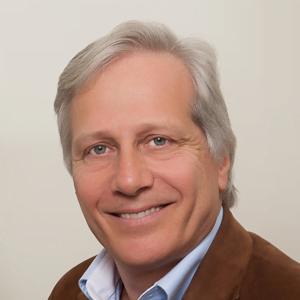
Alex Lidow
CEO
Efficient Power Conversion (EPC)
GaN Technology Driving Power Density in Data Centers
Space on a server board is extremely precious, and servers – especially those designed for performing high-end computation functions such as Artificial Intelligence (AI) – are demanding more and more power. Simultaneously, GPUs are becoming quite common in AI systems. These GPUs are putting additional demands on power conversion requirements, where voltages as low as 0.6 V are required under certain operating conditions. Requirements now routinely top 3 kW per board with several systems requiring as much as 5 kW.
These stringent power requirements have necessitated changes in basic power conversion architecture. Many server designs are switching from rack-based 48 V isolated, regulated DC-DC converters that convert to 12 V, to non-isolated, unregulated 48 V DC-DC converters mounted on the server boards. With board space at a premium, high power density architectures become the holy grail for power systems.

Alex Lidow
CEO
Efficient Power Conversion (EPC)
GaN Technology Driving Power Density in Data Centers
Space on a server board is extremely precious, and servers – especially those designed for performing high-end computation functions such as Artificial Intelligence (AI) – are demanding more and more power. Simultaneously, GPUs are becoming quite common in AI systems. These GPUs are putting additional demands on power conversion requirements, where voltages as low as 0.6 V are required under certain operating conditions. Requirements now routinely top 3 kW per board with several systems requiring as much as 5 kW.
These stringent power requirements have necessitated changes in basic power conversion architecture. Many server designs are switching from rack-based 48 V isolated, regulated DC-DC converters that convert to 12 V, to non-isolated, unregulated 48 V DC-DC converters mounted on the server boards. With board space at a premium, high power density architectures become the holy grail for power systems.

Alex Lidow
CEO
Efficient Power Conversion (EPC)
GaN Technology Driving Power Density in Data Centers
Space on a server board is extremely precious, and servers – especially those designed for performing high-end computation functions such as Artificial Intelligence (AI) – are demanding more and more power. Simultaneously, GPUs are becoming quite common in AI systems. These GPUs are putting additional demands on power conversion requirements, where voltages as low as 0.6 V are required under certain operating conditions. Requirements now routinely top 3 kW per board with several systems requiring as much as 5 kW.
These stringent power requirements have necessitated changes in basic power conversion architecture. Many server designs are switching from rack-based 48 V isolated, regulated DC-DC converters that convert to 12 V, to non-isolated, unregulated 48 V DC-DC converters mounted on the server boards. With board space at a premium, high power density architectures become the holy grail for power systems.

Alex Lidow
CEO
Efficient Power Conversion (EPC)
From Datasheet to Design: Thermal Design for modern DC/DC Converters
From Datasheet to Design: Thermal Design for modern DC/DC Converters
Modern DC/DC converters are expected to handle higher ambient temperatures in smaller footprints to optimize cost and solution-size in automotive, personal electronics and industrial equipment. This session will enable engineers to understand the thermal demands of high-power density designs for their next-generation products. We will examine how to read and interpret data sheet thermal metrics such as Θ JA and Ψ JT for TI’s Flipped Die on Lead Frame (HotRod) packages, and how to gather necessary information from efficiency and typical thermal performance curves. We will also highlight how to do effective thermal layouts and showcase studies of the tradeoffs for routing, layer count and thermal vias on thermal performance.

Dorian Brillet de Candé
Semiconductor Industry Marketing Manager
Texas Instruments
Dorian Brillet de Candé has been with Texas Instruments since 2018 with previous work as an applications engineer for low voltage high current buck converter and controllers.
From Datasheet to Design: Thermal Design for modern DC/DC Converters
Modern DC/DC converters are expected to handle higher ambient temperatures in smaller footprints to optimize cost and solution-size in automotive, personal electronics and industrial equipment. This session will enable engineers to understand the thermal demands of high-power density designs for their next-generation products. We will examine how to read and interpret data sheet thermal metrics such as Θ JA and Ψ JT for TI’s Flipped Die on Lead Frame (HotRod) packages, and how to gather necessary information from efficiency and typical thermal performance curves. We will also highlight how to do effective thermal layouts and showcase studies of the tradeoffs for routing, layer count and thermal vias on thermal performance.

Dorian Brillet de Candé
Semiconductor Industry Marketing Manager
Texas Instruments
Dorian Brillet de Candé has been with Texas Instruments since 2018 with previous work as an applications engineer for low voltage high current buck converter and controllers.
From Datasheet to Design: Thermal Design for modern DC/DC Converters
Modern DC/DC converters are expected to handle higher ambient temperatures in smaller footprints to optimize cost and solution-size in automotive, personal electronics and industrial equipment. This session will enable engineers to understand the thermal demands of high-power density designs for their next-generation products. We will examine how to read and interpret data sheet thermal metrics such as Θ JA and Ψ JT for TI’s Flipped Die on Lead Frame (HotRod) packages, and how to gather necessary information from efficiency and typical thermal performance curves. We will also highlight how to do effective thermal layouts and showcase studies of the tradeoffs for routing, layer count and thermal vias on thermal performance.

Dorian Brillet de Candé
Semiconductor Industry Marketing Manager
Texas Instruments
Dorian Brillet de Candé has been with Texas Instruments since 2018 with previous work as an applications engineer for low voltage high current buck converter and controllers.
From Datasheet to Design: Thermal Design for modern DC/DC Converters
Modern DC/DC converters are expected to handle higher ambient temperatures in smaller footprints to optimize cost and solution-size in automotive, personal electronics and industrial equipment. This session will enable engineers to understand the thermal demands of high-power density designs for their next-generation products. We will examine how to read and interpret data sheet thermal metrics such as Θ JA and Ψ JT for TI’s Flipped Die on Lead Frame (HotRod) packages, and how to gather necessary information from efficiency and typical thermal performance curves. We will also highlight how to do effective thermal layouts and showcase studies of the tradeoffs for routing, layer count and thermal vias on thermal performance.

Dorian Brillet de Candé
Semiconductor Industry Marketing Manager
Texas Instruments
Dorian Brillet de Candé has been with Texas Instruments since 2018 with previous work as an applications engineer for low voltage high current buck converter and controllers.
DC-DC Power Supply Design
DC-DC Power Supply Design
Power supplies and power management systems are fundamental to any electronics solution. They are logically simple but can be challenging to design or select especially when one wants to minimize cost, optimize efficiency and improve robustness. They are also critical components in any system.
DC-DC converters are one aspect of power supply solutions that have become important in applications ranging from mobile devices using minute amounts of power to electric vehicles.
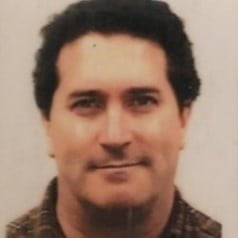
Brian Molloy
Director of Strategic Business Development
Infineon
Brian Molloy is currently the Director of Strategic Business Development at Infineon Technologies. He is responsible for growing the business for the DC-to-DC business in the Power Sensors and Systems division at Infineon. Mr. Molloy works closely with the product management team to ensure the technology and product line direction align with the strategic growth of the business. He has over twenty years of semiconductor design and application engineering, and business development experience. He worked for several global brands including STMicroelectronics and Seagate Microelectronics. He has a BE (Electronics) Degree from University College Galway, Ireland. In his spare time, he likes an occasional round of golf and hill walking.

Terry Cleveland
Director of Design Architecture and Applications Engineering
Microchip
Terry Cleveland has more than twenty-five years of experience in the semiconductor, automotive and aerospace industries. Terry began his career with IBM, where he worked as a system engineer developing semiconductor test equipment. Following this, he transitioned into the role of product failure analysis engineer with IBM, where he analyzed new components and field failures. Terry then went on to work as a power design engineer with IBM, Celestica and Lockheed Martin Control Systems developing power electronics solutions for data center, automotive and aerospace customers. Since joining Microchip Technology, Terry has taken on the role of defining new semiconductor power management products and supporting customers in the development of their power electronics solutions. His current responsibilities lie in managing Microchip’s analog and interface products system architecture and applications teams in the definition, architecture design and customer support. Terry received his BSEE from NYU Polytechnic University and his MSEE from Binghamton University.
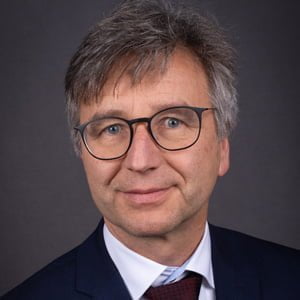
Carsten Oppitz
Vice President and General Manager, Buck Switching Regulators
Texas Instruments
Since joining Texas Instruments in 1998, Oppitz held several management positions for both custom and catalog products. Before joining Texas Instruments he worked as a researcher for the European Atmospheric Ozone Research Program.
Oppitz holds a Ph.D. in Electronics from Karlsruhe Institute of Technology, Germany.
DC-DC Power Supply Design
Power supplies and power management systems are fundamental to any electronics solution. They are logically simple but can be challenging to design or select especially when one wants to minimize cost, optimize efficiency and improve robustness. They are also critical components in any system.
DC-DC converters are one aspect of power supply solutions that have become important in applications ranging from mobile devices using minute amounts of power to electric vehicles.

Brian Molloy
Director of Strategic Business Development
Infineon
Brian Molloy is currently the Director of Strategic Business Development at Infineon Technologies. He is responsible for growing the business for the DC-to-DC business in the Power Sensors and Systems division at Infineon. Mr. Molloy works closely with the product management team to ensure the technology and product line direction align with the strategic growth of the business. He has over twenty years of semiconductor design and application engineering, and business development experience. He worked for several global brands including STMicroelectronics and Seagate Microelectronics. He has a BE (Electronics) Degree from University College Galway, Ireland. In his spare time, he likes an occasional round of golf and hill walking.

Terry Cleveland
Director of Design Architecture and Applications Engineering
Microchip
Terry Cleveland has more than twenty-five years of experience in the semiconductor, automotive and aerospace industries. Terry began his career with IBM, where he worked as a system engineer developing semiconductor test equipment. Following this, he transitioned into the role of product failure analysis engineer with IBM, where he analyzed new components and field failures. Terry then went on to work as a power design engineer with IBM, Celestica and Lockheed Martin Control Systems developing power electronics solutions for data center, automotive and aerospace customers. Since joining Microchip Technology, Terry has taken on the role of defining new semiconductor power management products and supporting customers in the development of their power electronics solutions. His current responsibilities lie in managing Microchip’s analog and interface products system architecture and applications teams in the definition, architecture design and customer support. Terry received his BSEE from NYU Polytechnic University and his MSEE from Binghamton University.

Carsten Oppitz
Vice President and General Manager, Buck Switching Regulators
Texas Instruments
Since joining Texas Instruments in 1998, Oppitz held several management positions for both custom and catalog products. Before joining Texas Instruments he worked as a researcher for the European Atmospheric Ozone Research Program.
Oppitz holds a Ph.D. in Electronics from Karlsruhe Institute of Technology, Germany.
DC-DC Power Supply Design
Power supplies and power management systems are fundamental to any electronics solution. They are logically simple but can be challenging to design or select especially when one wants to minimize cost, optimize efficiency and improve robustness. They are also critical components in any system.
DC-DC converters are one aspect of power supply solutions that have become important in applications ranging from mobile devices using minute amounts of power to electric vehicles.

Brian Molloy
Director of Strategic Business Development
Infineon
Brian Molloy is currently the Director of Strategic Business Development at Infineon Technologies. He is responsible for growing the business for the DC-to-DC business in the Power Sensors and Systems division at Infineon. Mr. Molloy works closely with the product management team to ensure the technology and product line direction align with the strategic growth of the business. He has over twenty years of semiconductor design and application engineering, and business development experience. He worked for several global brands including STMicroelectronics and Seagate Microelectronics. He has a BE (Electronics) Degree from University College Galway, Ireland. In his spare time, he likes an occasional round of golf and hill walking.

Terry Cleveland
Director of Design Architecture and Applications Engineering
Microchip
Terry Cleveland has more than twenty-five years of experience in the semiconductor, automotive and aerospace industries. Terry began his career with IBM, where he worked as a system engineer developing semiconductor test equipment. Following this, he transitioned into the role of product failure analysis engineer with IBM, where he analyzed new components and field failures. Terry then went on to work as a power design engineer with IBM, Celestica and Lockheed Martin Control Systems developing power electronics solutions for data center, automotive and aerospace customers. Since joining Microchip Technology, Terry has taken on the role of defining new semiconductor power management products and supporting customers in the development of their power electronics solutions. His current responsibilities lie in managing Microchip’s analog and interface products system architecture and applications teams in the definition, architecture design and customer support. Terry received his BSEE from NYU Polytechnic University and his MSEE from Binghamton University.

Carsten Oppitz
Vice President and General Manager, Buck Switching Regulators
Texas Instruments
Since joining Texas Instruments in 1998, Oppitz held several management positions for both custom and catalog products. Before joining Texas Instruments he worked as a researcher for the European Atmospheric Ozone Research Program.
Oppitz holds a Ph.D. in Electronics from Karlsruhe Institute of Technology, Germany.
DC-DC Power Supply Design
Power supplies and power management systems are fundamental to any electronics solution. They are logically simple but can be challenging to design or select especially when one wants to minimize cost, optimize efficiency and improve robustness. They are also critical components in any system.
DC-DC converters are one aspect of power supply solutions that have become important in applications ranging from mobile devices using minute amounts of power to electric vehicles.

Brian Molloy
Director of Strategic Business Development
Infineon
Brian Molloy is currently the Director of Strategic Business Development at Infineon Technologies. He is responsible for growing the business for the DC-to-DC business in the Power Sensors and Systems division at Infineon. Mr. Molloy works closely with the product management team to ensure the technology and product line direction align with the strategic growth of the business. He has over twenty years of semiconductor design and application engineering, and business development experience. He worked for several global brands including STMicroelectronics and Seagate Microelectronics. He has a BE (Electronics) Degree from University College Galway, Ireland. In his spare time, he likes an occasional round of golf and hill walking.

Terry Cleveland
Director of Design Architecture and Applications Engineering
Microchip
Terry Cleveland has more than twenty-five years of experience in the semiconductor, automotive and aerospace industries. Terry began his career with IBM, where he worked as a system engineer developing semiconductor test equipment. Following this, he transitioned into the role of product failure analysis engineer with IBM, where he analyzed new components and field failures. Terry then went on to work as a power design engineer with IBM, Celestica and Lockheed Martin Control Systems developing power electronics solutions for data center, automotive and aerospace customers. Since joining Microchip Technology, Terry has taken on the role of defining new semiconductor power management products and supporting customers in the development of their power electronics solutions. His current responsibilities lie in managing Microchip’s analog and interface products system architecture and applications teams in the definition, architecture design and customer support. Terry received his BSEE from NYU Polytechnic University and his MSEE from Binghamton University.

Carsten Oppitz
Vice President and General Manager, Buck Switching Regulators
Texas Instruments
Since joining Texas Instruments in 1998, Oppitz held several management positions for both custom and catalog products. Before joining Texas Instruments he worked as a researcher for the European Atmospheric Ozone Research Program.
Oppitz holds a Ph.D. in Electronics from Karlsruhe Institute of Technology, Germany.
Testing DC-DC Power Supplies
Testing DC-DC Power Supplies
The power electronics industry is undergoing an evolutionary transformation, driven by advances in software, materials, and topologies. In the area of DC-DC power conversion, the advances include digital power management, wide-bandgap semiconductors, and distributed power architectures.
These advances moving the industry forward are also placing pressure on the engineers responsible for testing and validating these new DC-DC power solutions. Converters are reaching levels of efficiency unthought of in the past, and ensuring they do their job safely, efficiently, and cost-effectively requires more advanced test methodologies and technologies as well.
This event will explore some of the issues and solutions involved with testing the latest DC-DC converters.
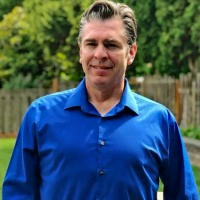
Tom Neville
Technology Manager for Power Electronics
Rohde & Schwarz
Tom has spent the last part of his career as a member of the power electronics community with a focus on understanding the challenges associated with test and measurement. He enjoys working with engineers across the many applications in this space to create solutions that make testing these challenging designs possible and by offering guidance on test methods. He received a Bachelor of Science from the United States Military Academy at West Point and Master of Science in Digital Circuit Design from Portland State University.
Testing DC-DC Power Supplies
The power electronics industry is undergoing an evolutionary transformation, driven by advances in software, materials, and topologies. In the area of DC-DC power conversion, the advances include digital power management, wide-bandgap semiconductors, and distributed power architectures.
These advances moving the industry forward are also placing pressure on the engineers responsible for testing and validating these new DC-DC power solutions. Converters are reaching levels of efficiency unthought of in the past, and ensuring they do their job safely, efficiently, and cost-effectively requires more advanced test methodologies and technologies as well.
This event will explore some of the issues and solutions involved with testing the latest DC-DC converters.

Tom Neville
Technology Manager for Power Electronics
Rohde & Schwarz
Tom has spent the last part of his career as a member of the power electronics community with a focus on understanding the challenges associated with test and measurement. He enjoys working with engineers across the many applications in this space to create solutions that make testing these challenging designs possible and by offering guidance on test methods. He received a Bachelor of Science from the United States Military Academy at West Point and Master of Science in Digital Circuit Design from Portland State University.
Testing DC-DC Power Supplies
The power electronics industry is undergoing an evolutionary transformation, driven by advances in software, materials, and topologies. In the area of DC-DC power conversion, the advances include digital power management, wide-bandgap semiconductors, and distributed power architectures.
These advances moving the industry forward are also placing pressure on the engineers responsible for testing and validating these new DC-DC power solutions. Converters are reaching levels of efficiency unthought of in the past, and ensuring they do their job safely, efficiently, and cost-effectively requires more advanced test methodologies and technologies as well.
This event will explore some of the issues and solutions involved with testing the latest DC-DC converters.

Tom Neville
Technology Manager for Power Electronics
Rohde & Schwarz
Tom has spent the last part of his career as a member of the power electronics community with a focus on understanding the challenges associated with test and measurement. He enjoys working with engineers across the many applications in this space to create solutions that make testing these challenging designs possible and by offering guidance on test methods. He received a Bachelor of Science from the United States Military Academy at West Point and Master of Science in Digital Circuit Design from Portland State University.
Testing DC-DC Power Supplies
The power electronics industry is undergoing an evolutionary transformation, driven by advances in software, materials, and topologies. In the area of DC-DC power conversion, the advances include digital power management, wide-bandgap semiconductors, and distributed power architectures.
These advances moving the industry forward are also placing pressure on the engineers responsible for testing and validating these new DC-DC power solutions. Converters are reaching levels of efficiency unthought of in the past, and ensuring they do their job safely, efficiently, and cost-effectively requires more advanced test methodologies and technologies as well.
This event will explore some of the issues and solutions involved with testing the latest DC-DC converters.

Tom Neville
Technology Manager for Power Electronics
Rohde & Schwarz
Tom has spent the last part of his career as a member of the power electronics community with a focus on understanding the challenges associated with test and measurement. He enjoys working with engineers across the many applications in this space to create solutions that make testing these challenging designs possible and by offering guidance on test methods. He received a Bachelor of Science from the United States Military Academy at West Point and Master of Science in Digital Circuit Design from Portland State University.
Voltage Ratings: Find the Best Power Inductor for Your Application
Voltage Ratings: Find the Best Power Inductor for Your Application
Voltage ratings are often specified for many electronic components, including capacitors, resistors and integrated circuits, but traditionally this has been rare for inductors. Recent trends, including the introduction of higher voltage rated semiconductor devices, have created a new emphasis on operating voltage as part of the inductor selection process. Inductors once considered optimized for high current, low voltage applications are finding homes in new designs that apply higher voltage stress to the inductor. This session will discuss the technology trends that place voltage stress on inductors, the physical mechanisms that determine inductor operating voltage capacity, and the use of voltage ratings as a part of the inductor selection process.
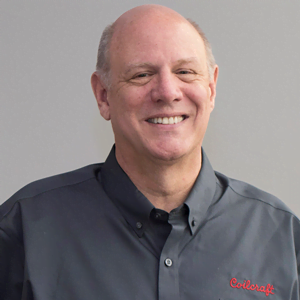
Len Crane
Senior Technologist
Coilcraft, Inc.
Len Crane has more than thirty years of inductor design and application experience with Coilcraft, serving as Engineering Manager for nineteen years and Technical Marketing Director since 2005. In his present role, Len focuses on the application of Coilcraft products; developing application notes and web tools for the optimal selection and use of Coilcraft inductors.
Len Crane holds a B.S. Electrical Engineering from the University of Illinois at Urbana-Champaign and a Masters of Engineering Management from Northwestern University in Evanston, Illinois.
Voltage Ratings: Find the Best Power Inductor for Your Application

Len Crane
Senior Technologist
Coilcraft, Inc.
Len Crane has more than thirty years of inductor design and application experience with Coilcraft, serving as Engineering Manager for nineteen years and Technical Marketing Director since 2005. In his present role, Len focuses on the application of Coilcraft products; developing application notes and web tools for the optimal selection and use of Coilcraft inductors.
Len Crane holds a B.S. Electrical Engineering from the University of Illinois at Urbana-Champaign and a Masters of Engineering Management from Northwestern University in Evanston, Illinois.
Voltage Ratings: Find the Best Power Inductor for Your Application
Voltage ratings are often specified for many electronic components, including capacitors, resistors and integrated circuits, but traditionally this has been rare for inductors. Recent trends, including the introduction of higher voltage rated semiconductor devices, have created a new emphasis on operating voltage as part of the inductor selection process. Inductors once considered optimized for high current, low voltage applications are finding homes in new designs that apply higher voltage stress to the inductor. This session will discuss the technology trends that place voltage stress on inductors, the physical mechanisms that determine inductor operating voltage capacity, and the use of voltage ratings as a part of the inductor selection process.

Len Crane
Senior Technologist
Coilcraft, Inc.
Len Crane has more than thirty years of inductor design and application experience with Coilcraft, serving as Engineering Manager for nineteen years and Technical Marketing Director since 2005. In his present role, Len focuses on the application of Coilcraft products; developing application notes and web tools for the optimal selection and use of Coilcraft inductors.
Len Crane holds a B.S. Electrical Engineering from the University of Illinois at Urbana-Champaign and a Masters of Engineering Management from Northwestern University in Evanston, Illinois.
Voltage Ratings: Find the Best Power Inductor for Your Application

Len Crane
Senior Technologist
Coilcraft, Inc.
Len Crane has more than thirty years of inductor design and application experience with Coilcraft, serving as Engineering Manager for nineteen years and Technical Marketing Director since 2005. In his present role, Len focuses on the application of Coilcraft products; developing application notes and web tools for the optimal selection and use of Coilcraft inductors.
Len Crane holds a B.S. Electrical Engineering from the University of Illinois at Urbana-Champaign and a Masters of Engineering Management from Northwestern University in Evanston, Illinois.
Educational Event Includes
- Five modules
- Free registration
- On-demand access
- Learn from anywhere
- Certificate of completion
- Prize giveaways

SPONSORED BY



